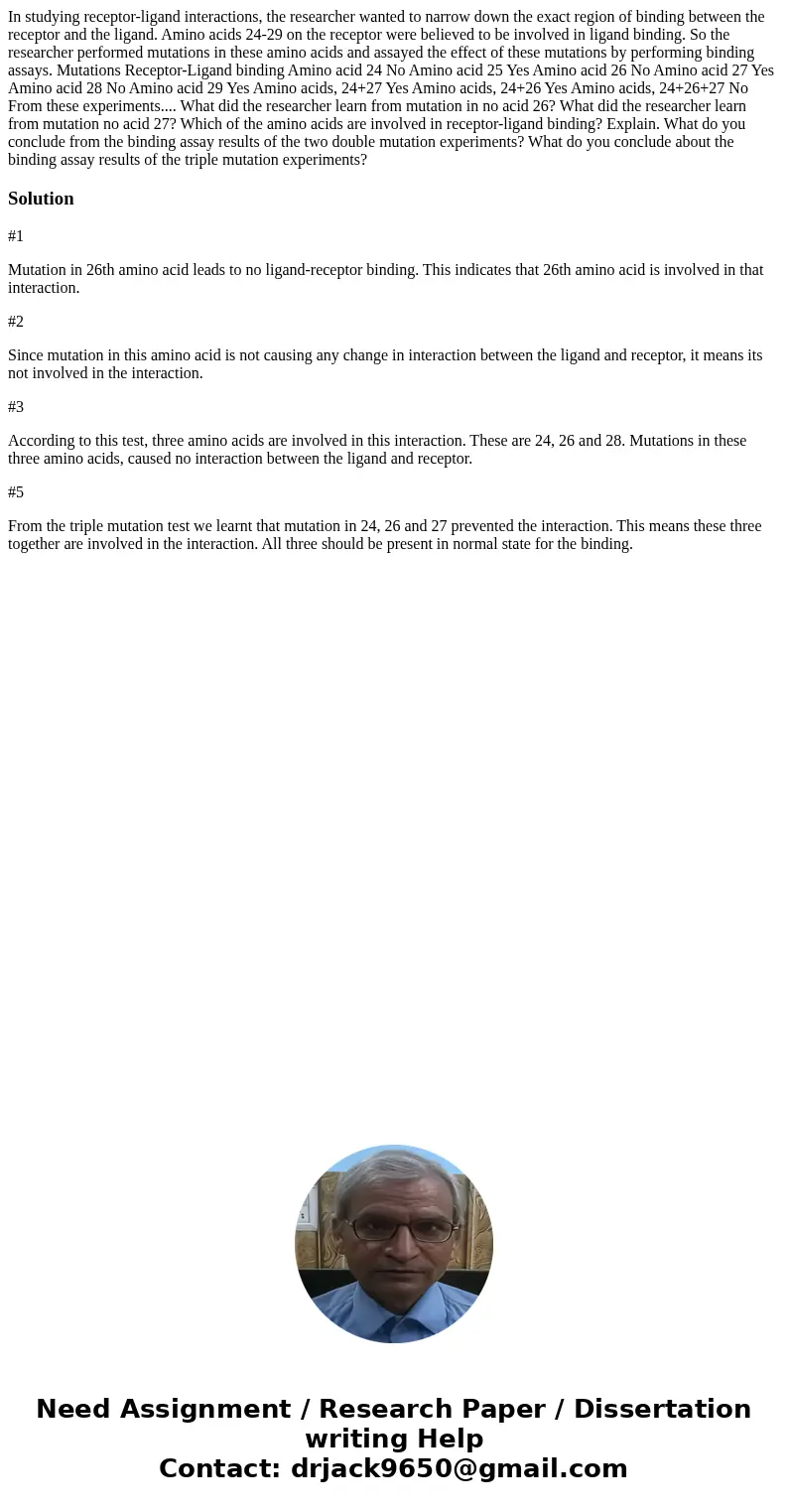In studying receptorligand interactions the researcher wante
In studying receptor-ligand interactions, the researcher wanted to narrow down the exact region of binding between the receptor and the ligand. Amino acids 24-29 on the receptor were believed to be involved in ligand binding. So the researcher performed mutations in these amino acids and assayed the effect of these mutations by performing binding assays. Mutations Receptor-Ligand binding Amino acid 24 No Amino acid 25 Yes Amino acid 26 No Amino acid 27 Yes Amino acid 28 No Amino acid 29 Yes Amino acids, 24+27 Yes Amino acids, 24+26 Yes Amino acids, 24+26+27 No From these experiments.... What did the researcher learn from mutation in no acid 26? What did the researcher learn from mutation no acid 27? Which of the amino acids are involved in receptor-ligand binding? Explain. What do you conclude from the binding assay results of the two double mutation experiments? What do you conclude about the binding assay results of the triple mutation experiments?
Solution
#1
Mutation in 26th amino acid leads to no ligand-receptor binding. This indicates that 26th amino acid is involved in that interaction.
#2
Since mutation in this amino acid is not causing any change in interaction between the ligand and receptor, it means its not involved in the interaction.
#3
According to this test, three amino acids are involved in this interaction. These are 24, 26 and 28. Mutations in these three amino acids, caused no interaction between the ligand and receptor.
#5
From the triple mutation test we learnt that mutation in 24, 26 and 27 prevented the interaction. This means these three together are involved in the interaction. All three should be present in normal state for the binding.

 Homework Sourse
Homework Sourse